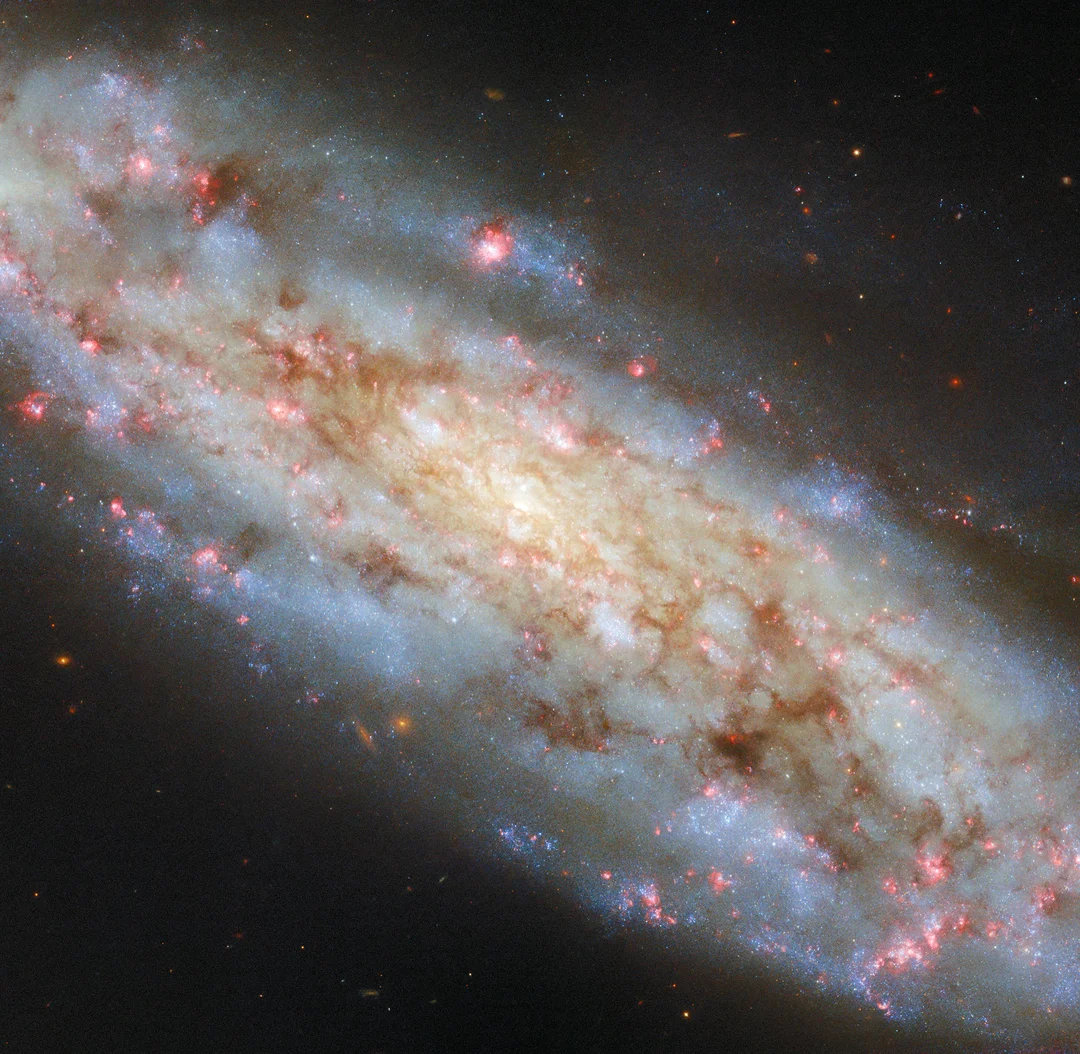
Hubble Captures Mesmerizing Spiral Galaxy NGC 3511: A Cosmic Cradle of Stars
The Hubble Space Telescope has once again delivered a breathtaking view of the cosmos, this time capturing the spiral galaxy NGC 3511 in stunning detail. Located approximately 43 million light-years away in the constellation Crater, this galaxy presents a unique perspective, tilted at a dramatic 70-degree angle, offering astronomers a valuable glimpse into the inner workings of star formation. This image isn't just beautiful; it's a scientific goldmine, helping researchers understand the birth and evolution of stars in galaxies much like our own.

The new Hubble image reveals why NGC 3511 is of such keen interest. Within its swirling arms lie vibrant clouds of gas and clusters of young, massive stars. These regions are actively giving birth to new stars, ignited by intense ultraviolet radiation. The glowing red clouds of hydrogen gas, energized by these newborn stars, are scattered throughout the galaxy. The image highlights blue clusters, shining with several times the brightness of our Sun.
As Sci.News points out, NGC 3511, also known as ESO 502-13, LEDA 33385, IRAS 11009-2248 or UGCA 223, extends across 107,000 light-years. Discovered by William Herschel in 1786, it forms part of the NGC 3511 group along with NGC 3513 and ESO 502-024. The Hubble observations leveraged multiple filters across the ultraviolet, visible, and near-infrared spectrums, creating a rich color composite where each filter corresponds to a specific hue.
Hubble's unique vantage point allows astronomers to meticulously catalogue and measure the ages of these stars, which are typically less than a few million years old. The observatory's data will assist in mapping their distribution and gaining crucial insights into their life cycles, as reported by NASA.

The stunning spiral formation of NGC 3511, as described by recent reports, offers further context. Its oblique angle, neither entirely face-on nor edge-on, coupled with a play of light from ultraviolet to infrared spectrum, creates a mesmerizing display of blues, pinks, and golds. Dark dust lanes streak across the vista, adding a painterly quality and emphasizing the star-forming regions along the spiral arms.
The arms of NGC 3511 are more than just visually striking; they are galactic engines where gas and dust collide, catalyzing the creation of new stars. At the heart of the galaxy, it is believed that a supermassive black hole resides, its gravity influencing the overall structure, acting as the unseen architect of this cosmic masterpiece.
This latest image from Hubble underscores the telescope's enduring value in unraveling the mysteries of galaxy evolution and star formation. What other secrets does NGC 3511 hold? Leave your thoughts in the comments below.